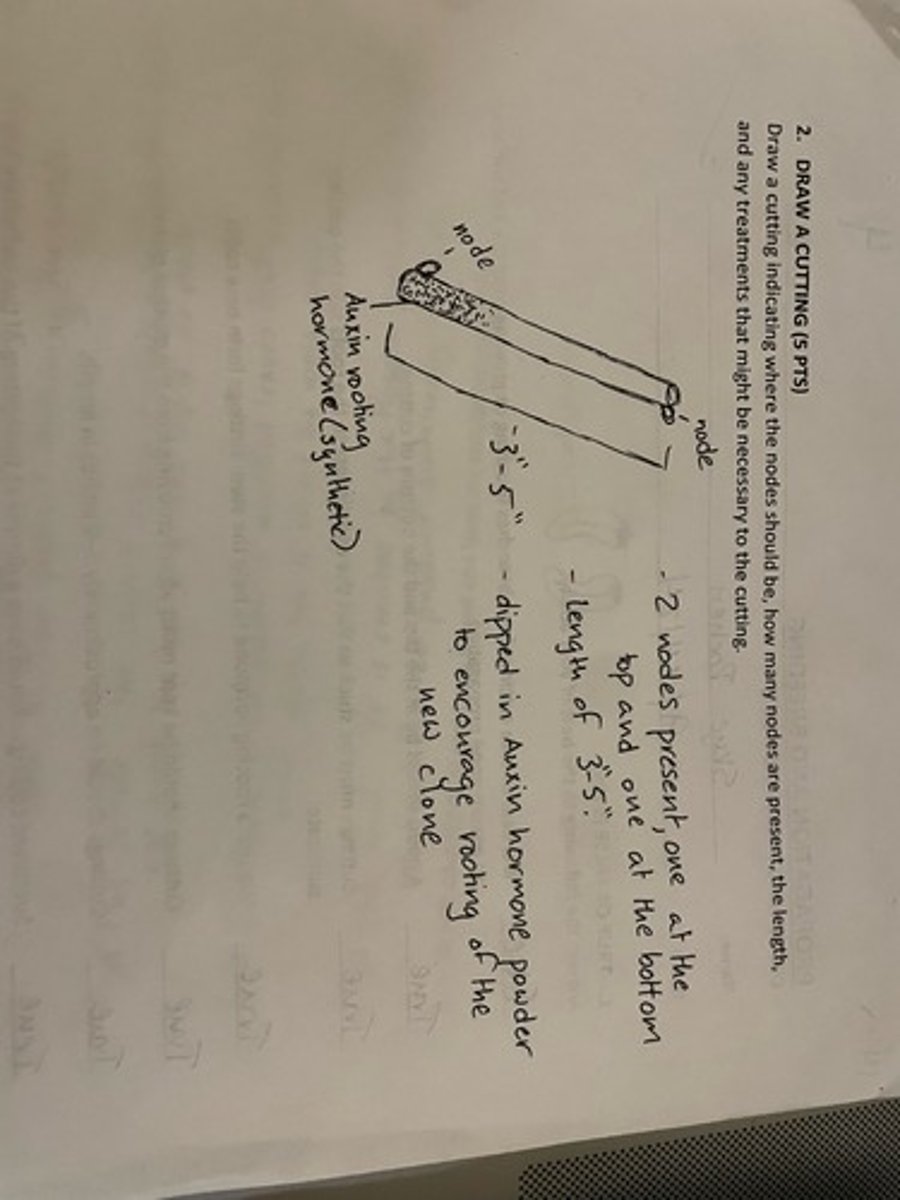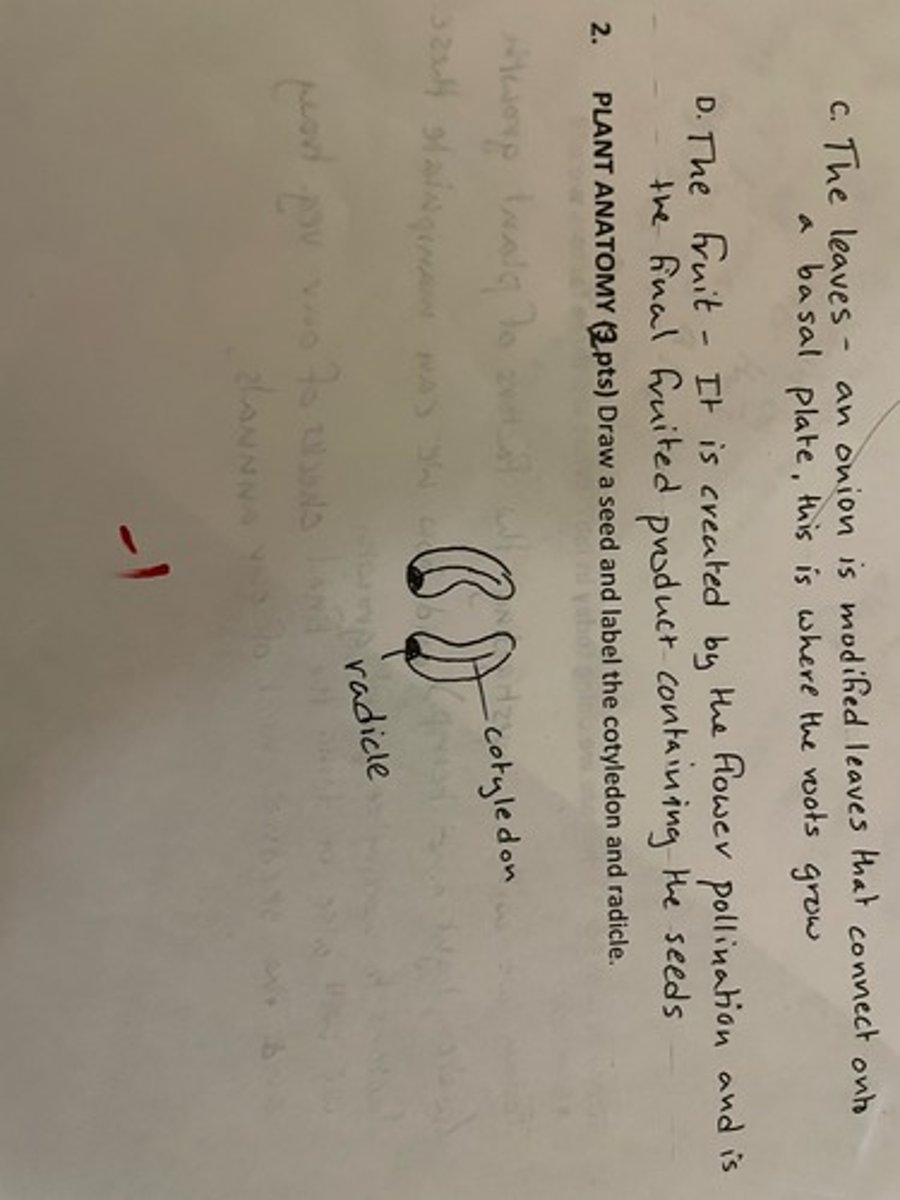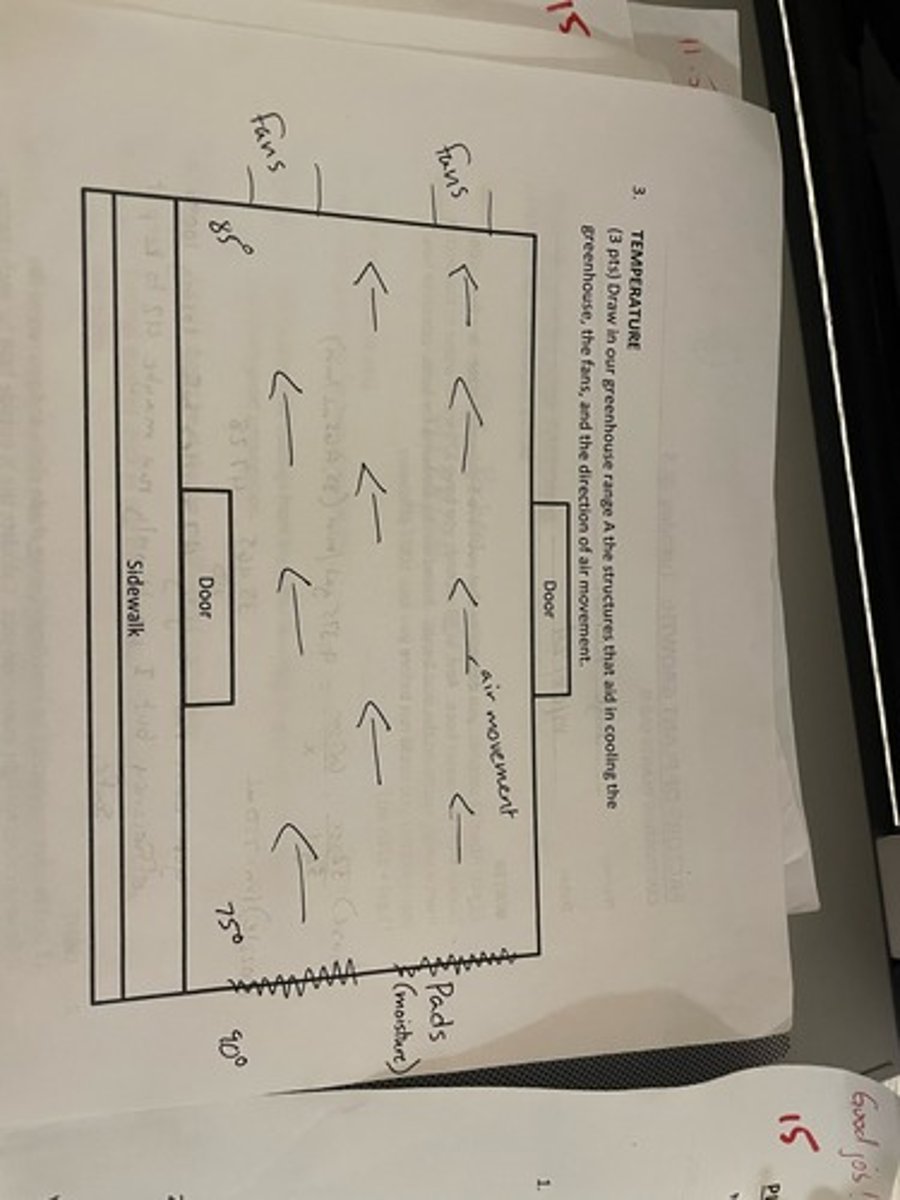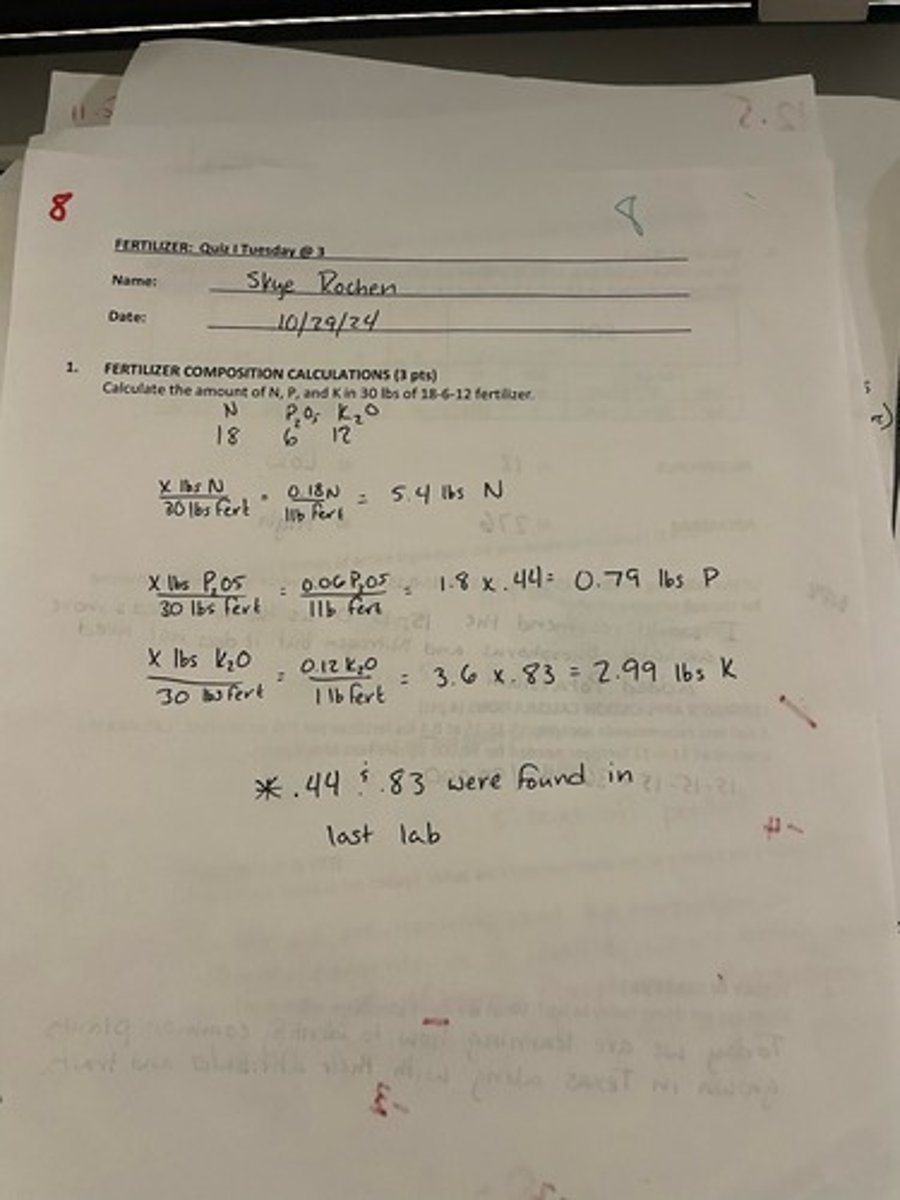Cultivating Plants, Lab Practical study guide
1/32
There's no tags or description
Looks like no tags are added yet.
Name | Mastery | Learn | Test | Matching | Spaced |
|---|
No study sessions yet.
33 Terms
What are the steps of the Scientific Method?
1) Observe
2) Formulate questions
3) Create hypothesis
4) Test hypothesis
5) Accept, Modify, or reject hypothesis by observing and collecting data
What 3 things do seeds need to germinate?
-Moisture (water)
-Good temperatures
-Oxygen (O2)
What is the difference between a hypothesis and a null hypothesis?
Adding the word NOT creates a null hypothesis. You don't change any other wood from the initial hypothesis.
What is a hypothesis?
A questioning statement that is meant to pose an idea to a working theory.
What goes on a plant label?
Your name, for a student the class period, the plants name and cultivar, and the date of sowing/planting.
What goes in an in text citation?
The author/s/ name and the year of publication.
If you sow 180 seeds, 115 of which germinate; What is the germination percentage?
115/180 = .638
.638 x 100 = 64% when rounded.
What three things do you evaluate when assessing a site for a garden?
Topography, Climate, Light
Additionally you should take into account what the pest situation is.
You are asked if an area near a farmers market would be a good space for a garden, what do you look at to briefly decide?
The amount of space available for planting, how flat/even the surface is, quality or content of the soil.
Describe the process of collecting a soil sample.
Dig a hole, roughly 6 inches deep, in the area you are wanting to test. Taking a trowel go one in. out from the lip of the hole and take a "slice" all the way to the bottom in order to collect different soil layers.
Find the area of a 60ft x 6ft garden and find the volume of topsoil needed to add 5 in. of topsoil.
Area is 60ft x 6ft = 360 sq/ft
Volume is 60ft x 6ft x 5 in (convert 5 in into ft)
so 60x 6 x .43 = 151.2 ft cubed
True or False: It is best to take cuttings from branches touching or growing near the soil surface to ensure good propagation.
False
True or False: A node should be at the top and bottom of a cutting.
True
True or False: Cuttings must be stuck so that the end closest to the roots is in the potting substrate.
True
True or False: We use a rooting hormone to help stem cuttings form new roots.
True
True or False: Cuttings should be kept moist after removing from the mother plant.
True
True or False: Cuttings should be approximately 3-5in in length.
True
True or False: Succulent cuttings should have a dimple at the bottom of the leaf where meristematic tissue occurs.
True
True or False: Diecious plants are only capable of crossing.
True
True or False: When a plant outcrosses (crossing), it moves pollen from the stamen to the pistil on the same plant
False
True or False: It is best to prune a plant that blooms on old wood after the plant blooms
True
Draw a stem cutting and label the number of nodes, length, and any additives.

Draw a seed and label the Cotyledon and radicle

Calculate the number of liters a container will hold. The width is 30in, height is 40in, and the length is 20 in. If 61 in3 = 1 Lt
30 x 40 x 20 = 24,000 in3
61 in3/ 1 Lt = 24,000in3/ x Lt = 393.44 Liters
After 32 seconds you have 5 gallons of water in a five gallon bucket from a water hose. In 30 seconds you collect 375 mL of water in the bucket from a single nozzle on the mist bench. Based on the amounts for both calculate how many nozzles you can run before you lose 100% efficiency.
Garden Hose:
32seconds/5gallons = 60seconds/ x gallons = 9.375 gal/min (35,465 mL/min)
Nozzle:
1 minute = 750 mL
Total running nozzles:
35,465/750 = 47.28 Nozzles before losing 100% efficiency
I would only run around 42 nozzles to prevent maxing out the system.
Calculate percentage of outside light based on number of foot candles using a shade cloth
100% outside light = 9500FC
shade cloth one provides: 8250FC
Aluminum shade cloth 2 provides: 5750FC
% of FC with shade cloth 1:
8250/9500 = .868
.868 x 100 = 86.8 % rounded to 87% of the outside light
% of FC with shade cloth 2:
5750/9500 = .605
.605 x 100 = 60% of the outside light
Draw the workings of the greenhouses

How does the greenhouse cool air.
Air is drawn in through the moisture pads causing it to cool down. The cooled air then travels through the greenhouse being pulled by the "backwards" fans. keeping the air moving and cooled throughout the greenhouse.
What three items do you look for in a pesticide label?
-Main ingredient name
-amount for use recommendations
-and safety precautions
What 3 nutrients do you look for on a fertilizer bag?
- Nitrogen
- Phosphorus
- Potassium
An 8G herbicide is applied at a rate of 1.5 lb of product/ 1000ft2 to a 135,000ft2 lawn. It is sold in 45 lb bags
1) How much active ingredient is in the herbicide?
2) how much product do you need for application?
3) How many lbs of active ingredient did you apply to the area?
4) How many bags of product do you need?
1) 0.08% active Ingredient
2)1.5 lb x 135 = 202.5 lbs of active ingredient
3) 0.08 x 202.5 = 16.2 lbs of active ingredient
4)202.5/ 45 = 4.5 bags. round to 5 bags.
Fertilizer calculations (flip card)

What three things do you look for in plant business.
Profit, Revenue, and cost